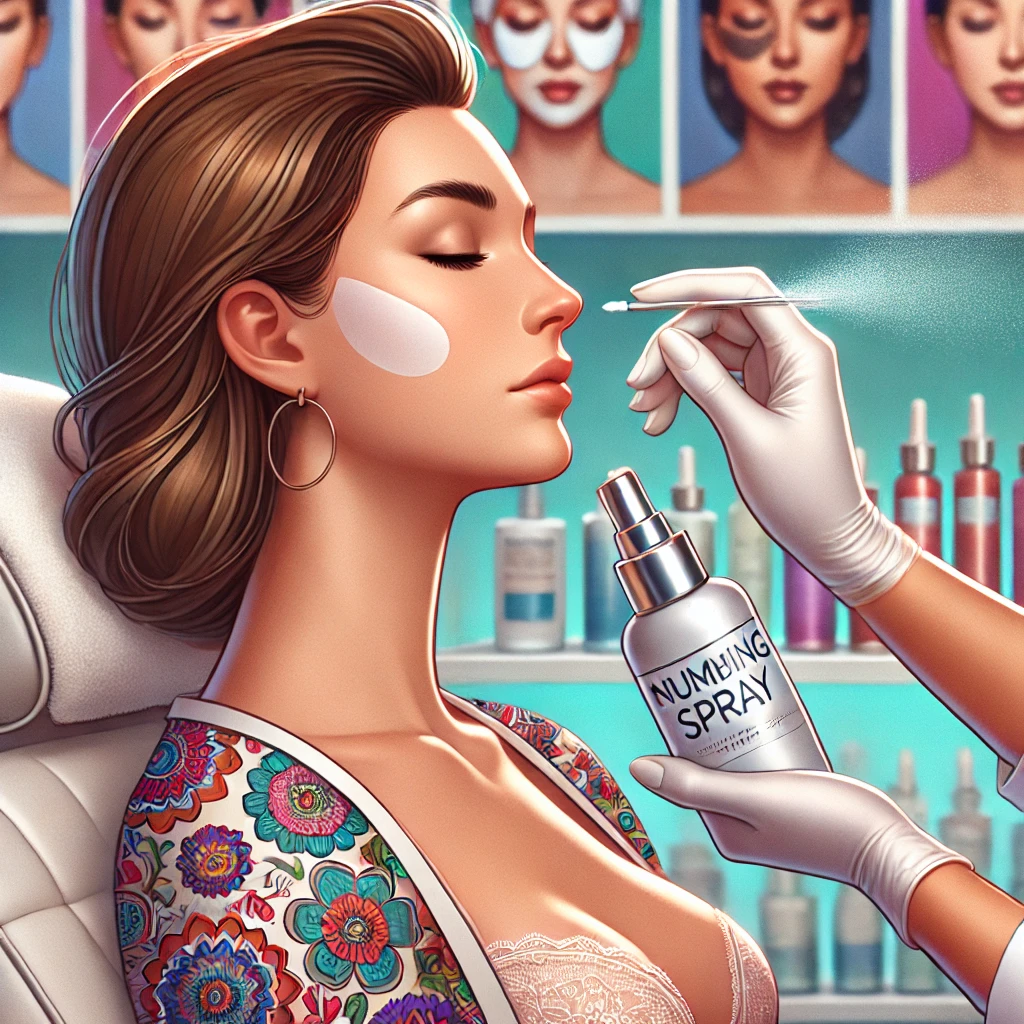Numbing spray for sugaring facial hair: Popular hair removal method, sugaring has attracted interest for being a natural substitute for waxing. This is a good way to get facial hair out so that skin is smooth and hair-free. But one shared worry about sugaring is the pain it can cause, especially for sensitive skin or places like the top lip, chin, or brows.
Many people resort to numbing sprays to help with this so that the sugaring process is more pleasant. On your face, though, is numbing spray safe? How does it work? From their advantages to their operation, we will cover all you need to know about numbing sprays for sugaring facial hair in this thorough guide, together with pointers for using them efficiently.
What Is Numbing Spray for Sugaring Facial Hair?
Designed to momentarily lessen or eradicate the sensation of pain in certain areas of the skin, numbing spray—also called topical anesthetic spray—is In the context of sugaring, a numbing spray is sprayed to the area—such as the upper lip, chin, or sideburns—where hair removal is to take place. Usually include active components like lidocaine, benzocaine, or tetracaine, which block nerve signals in the skin and help the brain to produce pain feelings; the spray is
Applied properly, a numbing spray can greatly lessen the pain connected with sugaring, therefore improving the comfort of the procedure. Those who are highly sensitive to pain or who are new to sugaring and wish to reduce the first discomfort may notably benefit from it.
How Does Numbing Spray Work?
Local anesthetics found in numbing sprays disrupt the signals moving from nerve endings to the brain. These sprays’ active components momentarily block pain receptors, giving the targeted area numbness or “frozen” sensations.
Generally speaking, numbing sprays operate as follows:
Application: The region where hair removal will take place is lightly numbing sprayed. This could be the upper lip, chin, eyebrows, or any other facial feature covered in undesired hair.
Absorption: Absorbing the spray into the surface layer of the skin it works magic by dulling the nerve pain receptors.
Numbness: Within a few minutes, the area will start to feel numb, and the pain or discomfort brought on by sugaring will either be lessened or removed.
Sugaring Process: Once the numbing effect starts, the sugaring can go more easily, and the practitioner can remove undesired hair with less pain and aggravation.
The numbing effect usually lasts anywhere from 30 minutes to an hour, depending on the substance and personal skin sensitivities.
Benefits of Using Numbing Spray for Sugaring Facial Hair
For individuals who find hair removal operations uncomfortable, especially, numbing spray for sugaring facial hair has many advantages. The following are few of the primary benefits:
Pain Reduction
The most clear advantage of a numbing spray is pain reduction. Applying a sticky material to the skin and rapidly taking it off—a process known as sugaring—can cause irritation. The numbing spray helps to lessen this sensation, therefore improving the tolerability of the treatment.
Less Skin Irritation
You can stiffen up or move suddenly when in pain, which increases your chance of skin irritation or injury. The numbing spray keeps you calm so that the sugaring expert may execute the treatment quickly and effectively with minimal danger of irritation.
Faster and More Efficient Treatment
The sugaring process might be finished faster when you are not concerned about the discomfort. numbing spray will help you to resist longer sessions, thus the technician may remove more hair in one session, so leaving you smoother skin.
Suitable for Sensitive Areas
Some face areas, like the upper lip or around the eyebrows, might be especially sensitive. The numbing spray lets you undergo sugaring in these delicate places without the usual pain.
Helps Beginners Get Comfortable
For those just starting sugaring or waxing, a numbing spray might help to make the process more under control. The spray helps you to progressively become used to the hair removal process by lowering the first shock it causes.
How to Use Numbing Spray for Sugaring Facial Hair
Effective numbing spray guarantees that the sugaring procedure goes comfortably and without problems. Use these guidelines for optimum results:
Cleanse the Area
Make sure the area you’ll be sugaring is clean before using the numbing spray. Get any dirt, oils, or makeup out using a mild cleanser. This guarantees appropriate absorption of the numbing spray into the skin.
Apply the Numbing Spray
About 4–6 inches from the skin, hold the numbing spray and lightly cover the region you wish to treat. Steer clear of overdoing it on the skin since this could cause too much product accumulation.
Allow Time for Absorption
Give the spray some time to penetrate into the skin once you have sprayed it. You will start to experience the region numbing. As the product directions indicate usually between five and fifteen minutes wait for the advised period.
Test the Numbness
Touch the region gently to see whether it is numb. Apply another application of spray and wait a few more minutes if the region isn’t adequately numbed.
Begin Sugaring
The sugaring process starts when the region is suitably numbed. Because of the numbing effect, your technician will rapidly remove the hair and apply the sugar paste to the skin, therefore minimizing any discomfort.
Aftercare
Following correct aftercare guidelines is crucial to maintain calm skin and lower inflammation once sugaring is finished. This can entail minimizing sun exposure for a few hours and applying calming oils or gels.
Are There Any Side Effects of Numbing Spray?
Although numbing sprays are usually regarded as safe, there are some negative effects and care to be aware of:
Skin Sensitivity: The numbing spray may cause a moderate allergic reaction in some people that causes redness, swelling or itching. Before using the spray on a greater region, always test it on a little skin patch.
Prolonged Numbness: Extended numbness might result from too long or too frequent numbing spray usage. This could cause a brief lack of sensation in the skin, which would complicate determining the appropriate sugaring pressure.
Avoiding Broken Skin: Steer clear of numbing spray for injured or irritated skin. Adverse reactions could result from the spray’s fast absorption and increased irritation it causes.
Tips for Choosing the Right Numbing Spray for Sugaring Facial Hair
When looking for a numbing spray, it is imperative to choose a premium item safe for use on the face. These pointers help you select the appropriate numbing spray:
Check the Ingredients: Search for sprays with FDA-approved active components like benzocaine or lidocaine, as these are often used in painkillers and are really effective.
Choose a Spray for Facial Use: A few numbing sprays are designed for use on the face. Usually milder and less prone to aggravate sensitive skin than body sprays are they.
Look for a Non-Greasy Formula: Choose a spray that dries fast and leaves no greasy residue on the skin, therefore interfering with the sugaring process.
Consider Your Skin Type: If you have sensitive skin, choose a mild, unlikely-to-aggravate hypoallergenic numbing spray.
Read Also: Do People in the Traditional Economy Making Braclets?
Conclusion
For those looking for a more pleasant hair removal experience, numbing spray for sugaring facial hair changes everything. It speeds up and more effectively completes the procedure, lessens skin irritation, and helps with discomfort. Using a numbing spray will help your sugaring sessions be lot more comfortable regardless of your level of experience.
Always take components, skin type, and product fit for facial use into account while selecting a numbing spray. Using the correct product and procedure will help you to have smooth, hair-free skin free from the discomfort connected with sugaring.

